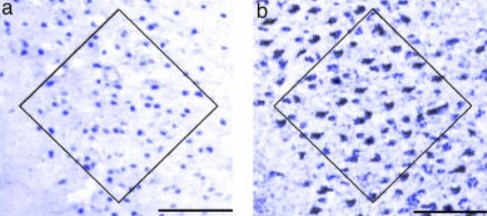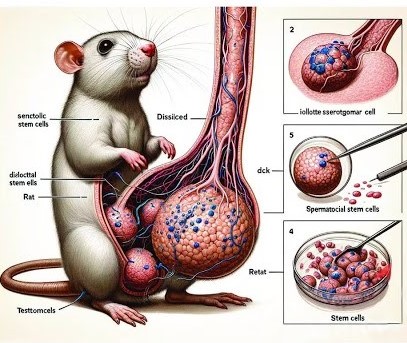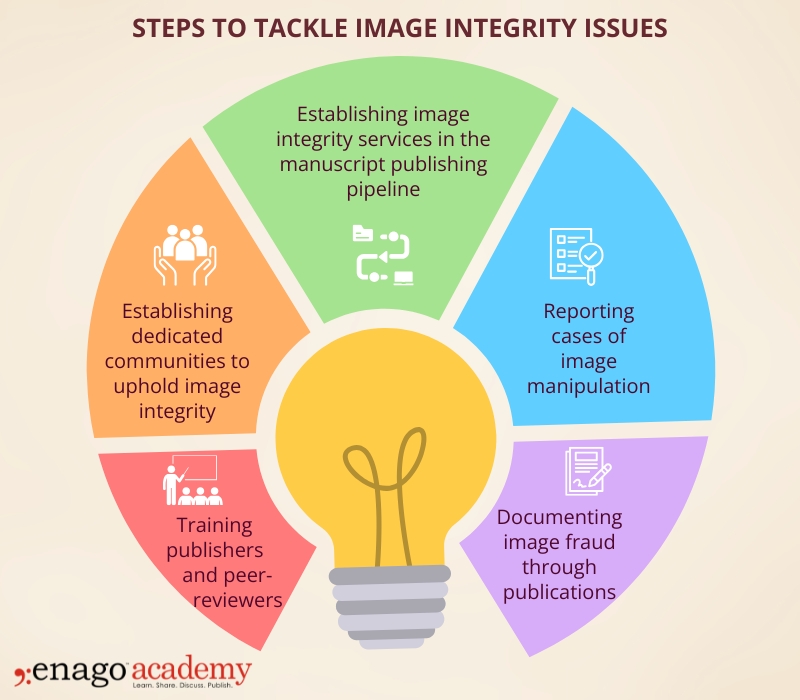Growing Threat of Image Manipulation: Historic cases of retractions due to image fraud

Dr. Alan Fisher knew his team’s research had immense potential. After months of tireless work, they finally achieved groundbreaking results. However, as he reviewed the images in his manuscript, he noticed that some were unclear. He knew that even minor image enhancements could make significant difference, perhaps increasing his chances of publication in a high-impact journal. A subtle adjustment to brightness and contrast — what harm could it do?
Yet, these small tweaks mark a slippery slope. While many researchers make honest, minor adjustments, others cross the line into manipulation that can distort findings. Alan’s dilemma mirrors a rising challenge in the scientific community today: how much enhancement is too much? In research publishing, the visual presentation of data is as important as the data itself. This is especially true in biological research where visual data such as microscopic images and gel images (e.g., western blots, gel electrophoresis images) – serve as major forms of evidence.
A study revealed that one in 25 papers contains inappropriately duplicated images. According to the retraction database, the number of retractions in health sciences rose significantly in the early 2000s and had a fluctuating trend over past decade. Another study, analyzing papers with manipulated images in relation to their funding sources revealed that more than 50 % of the manipulated papers were not supported by the US government.
Reviewing notable cases of image manipulation offers valuable insights into the far-reaching consequences of image manipulation. This also serves as a reminder to take active steps in preventing such issues.
Historic Cases of Image Manipulation
Woo Suk Hwang Case
Year of Retraction: 2005
Field of Research: Embryonic Stem Cell Research
Research Integrity Issue: Image manipulation and data fabrication
Details: South Korean researcher Woo Suk Hwang published groundbreaking research in 2004. The paper claimed to have successfully established 11 embryonic stem-cell lines from the skin cells of individual patients. However, one of the co-author raised concerns regarding the unusually short duration in which these stem cells were cultured. A private investigator, Su-cheop ordered DNA analysis for the 11 stem cells and confirmed that the authors had indeed fabricated the data to support their claims. Dr. Hwang stated, “Mistakes made, human errors, in taking photographs and in the preservation of the stem cells”.
Consequences: Hwang’s papers were retracted from Science and other prestigious journals. He was also charged with embezzlement and bioethics law violations. The scandal tainted public perception of stem cell research, and South Korea’s government eventually suspended Hwang’s research funding. The impact of Hwang’s actions has cast a long-lasting shadow over the field, illustrating the profound damage caused by scientific misconduct.
Zou Zhihua and Linda Buck Case
Year of Retraction: 2010
Field of Research: Neuroscience (Olfactory Receptors)
Research Integrity Issue: Data falsification and image manipulation
Details: Zou Zhihua, a post-doctoral student under Nobel laureate Linda Buck, was found to be engaged in image manipulation and data falsification. His supervisor, Linda Buck herself, initiated an internal review after noticing a few discrepancies during the verification of findings. The investigation, then, revealed that the images were indeed manipulated in a couple of manuscripts.
Manipulated Image:
In the below image, the number and location of positively stained cells in the olfactory bulb and olfactory cortex of mice had been altered.

Source: Zou Z et.al. 2005 (retracted)
Consequences: Zhihua’s papers were retracted from Nature and PNAS. He also agreed to a settlement where all publicly funded research work led by him would be under supervision for 3 years. Because this case involved a Nobel laureate, it raised significant questions regarding oversight, accountability and the need for rigorous data validation even among highly respected researchers.
Haruko Obokata Case
Year of Retraction: 2014
Field of Research: Stem Cell Biology
Research Integrity Issue: Image alteration and data fabrication
Details: Haruko Obokata, a Japanese researcher, claimed to have developed a novel protocol for transforming normal body cells into pluripotent stem cells. The team claimed that a short incubation of the cells in a weak citric acid solution was sufficient to trigger ‘stemness’ and therefore, these cells were named ‘STAP (stimulus-triggered acquisition of pluripotency) cells’. This simple solution sparked discussions over social media where netizens raised concerns about image manipulation and plagiarism. This prompted Obokata’s employer to conduct investigations which revealed that these so-called STAP cells were just regular embryonic stem cells. They also uncovered image alterations and tampered data in her published findings.
Consequences: Obokata’s papers were retracted from Nature, and she faced intense scrutiny from both the scientific community and the public. Eventually, she resigned from her position and her doctorate was cancelled by Waseda University. The scandal severely damaged the reputation of RIKEN, the organization that Obokata was associated with. This case highlighted the dangers of hype-driven research without stringent validation. Furthermore, it laid the foundation of active discussions on the best response to research integrity fraud.
Silvia Bulfone-Paus Case
Year of Retraction: 2010
Field of Research: Immunology (Cytokine Signaling)
Research Integrity Issue: Image manipulation
Details: An external investigation was launched by the immunology department after receiving concerns from anonymous whistleblowers. The investigation uncovered various instances of image manipulation by German immunologist Silvia Bulfone. They found extensive tampering across several of her publications, indicating a pattern of misconduct.
Consequences: The investigations led to the retraction of over 13 papers, significantly damaging the reputation of the associated institutions. The Joint Committee of the DFG (German Research Foundation) prohibited her from submitting proposals for five years. The case prompted institutions and journals to adopt stricter peer-review standards for image validation, emphasizing the need for heightened scrutiny before manuscript submission.
Pier Paolo Pandolfi Case
Year of Retraction: 2019
Field of Research: Oncology and Cancer Biology
Research Integrity Issue: Image duplication and questionable data practices
Details: A respected cancer researcher, Pier Paolo Pandolfi’s studies faced allegations of image manipulation in over 13 articles. The controversy began when whistleblowers raised concerns regarding the images presented in his manuscripts on Pub-Peer. An independent research integrity expert, Enrico Bucci examined over 33 papers and reported that around 13 of them have serious data integrity issues.
Consequences: Allegations against Pandolfi severely damaged his reputation. The Veneto Institute of Molecular Medicine revoked his nomination as scientific director. His case reinforced the need for rigorous review practices in high-stakes fields like oncology, where manipulated data easily misdirects critical cancer research and development of treatment.
Fazlul Sarkar Case
Year of Retraction: 2015 onwards
Field of Research: Cancer and Molecular Biology
Research Integrity Issue: Extensive image manipulation across numerous studies
Details: Fazlul Sarkar, a prominent cancer researcher, was charged with image manipulation and questionable data practices by whistleblowers in PubPeer. Sarkar denied any malpractice and took it to court to sue the critics of this public forum. Not only did he lose the 2016 trial, he also found himself to be one of the major authors whose papers were mass-retracted. His case is one of the largest involving image manipulation, indicating systemic oversight issues within his institution and the journals involved.
Consequences: Sarkar’s extensive retractions led to significant discredit to his work and impacted the cancer research community, which had referenced his findings in numerous studies. The number of retractions touched 40 papers. The scale of his misconduct highlighted the need for consistent and proactive checks on image integrity, especially in impactful fields like cancer research.
Dana-Farber Case
Year of Retraction: 2021 onwards
Field of Research: Cancer Biology
Research Integrity Issue: Image manipulation and data falsification
Details: Studies published by researchers at the Dana-Farber Cancer Institute were critiqued by a molecular biologist Sholto David, PhD on a public forum as he raised his concern about manipulated images and discrepancies in experimental data across dozens of papers.
Consequences: Extensive image manipulation of the evidence raised serious concern on the credibility of the findings. Consequently, Dana-Farber initiated an internal investigation which led to requests for 6 retractions and corrections to 31 other articles. This tarnished the reputation of the institute, prompting it to adopt stricter internal review check points.
Xinyu Guo Case
Year of Retraction: 2024
Field of Research: Cell and Developmental Biology
Research Integrity Issue: Misuse of AI-generated image
Details: A recent paper published in Frontiers in Cell and Developmental Biology featured inappropriate AI-generated illustrations. While the use of AI was disclosed by the authors, the figures contained anatomically implausible elements such as a rat with exaggerated features and illegible labels. Research integrity advocates took to social media to report the oversight of the reviewers and publishers sparking discussions among the stakeholders.
AI-Generated Image:

Source: Guo X el. al. 2024
Consequences: The paper was retracted within days after widespread criticism from the scientific community. The journal faced backlash for its lack of editorial oversight, especially regarding the review and approval of figures in the pre-publication process. Interestingly, the reviewer of this paper argued that it is the publisher’s responsibility to vet the accuracy of the sources. Nonetheless, this case highlights the need for collective responsibility in upholding research integrity.
After reviewing past cases of image manipulation in scientific research, Dr. Alan Fisher felt determined to avoid any unintentional malpractices in his own work. He consulted his colleague, Dr. Amy Kozner, for advice on how to prevent such issues. Together, they discussed strategies for tackling image fraud to maintain research integrity.
Steps to Tackle Image Integrity Issues:

As outlined by these high-profile cases, manipulated images can distort scientific understanding, mislead the research community and erode public trust. While journals and policy makers are implementing stringent rules and guidelines to reduce research misconduct, it remains crucial for collaborative research teams and institutions to have internal checkpoints in place that detect such issues at an early stage.
Utilizing technology effectively by integrating it with the discerning eye of human expertise can enhance the accuracy of image integrity assessments. Services like Enago’s Image Manipulation Detection Service provide research teams and institutions powerful means to identify and address image manipulation at early stages, aiding in safeguarding scientific credibility and upholding research standards.









